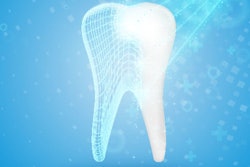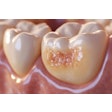
Unrealistic aesthetic expectations driven by social media may have led to overtreatment with direct composites for problems that needed no or minimal intervention, according to a case series that was recently published in the Journal of Esthetic and Restorative Dentistry.
Social media influence and changing aesthetic norms on the overuse of direct composite resin veneers raise ethical issues within dentistry, the authors wrote.
“Dental professionals must carefully consider the balance between patient desires and genuine treatment needs, with a focus on ethical and evidence-based practice,” wrote the authors, led by Dr. Camila Sampaio, PhD, of Advanced Clinical Fellowship Programs in Esthetic and Operative and Digital Dentistry at the New York College of Dentistry (J Esthet Restor Dent, December 23, 2023).
Restorative materials, such as ceramics and composites, have gained popularity to fix tooth color, shape, and alignment problems. Though composite resin procedures can be done in a very conservative, cost-effective, and timely fashion, the standards created by social media and other platforms may have led to unrealistic aesthetic expectations and standards for both patients and dentists. Instances of overtreatment can be seen in the following cases, according to the clinical article.
A 25-year-old woman with composite resin veneers
In the first case study, the woman -- eight months prior to her visit -- had veneers placed from molar to molar in the upper arch. When she underwent the procedures, she was informed about oral health practices. However, she reported having difficulties brushing and flossing the veneers and had persistent bad breath.
She worried that her gum problems may progress, affecting dental support structures and possibly leading to caries. A clinical exam revealed gum inflammation with bleeding on probing and the presence of generalized calculus from inadequately executed restorations that ignored basic principles for preserving dental health, according to the report.
In the first phase of treatment, the restorative material was removed to ensure minimal enamel loss to preserve the aesthetic integrity of her dental anatomy. Then, her incisal edges were reconstructed, focusing exclusively on restoring both central incisors, to achieve her desired outcome.
A 29-year-old man with veneers
When the patient presented, he had composite resin veneers spanning from lateral to lateral in the upper arch that had been placed several years ago. A clinical exam showed the veneers exhibited inadequate surface anatomy, contour, interproximal contact, and color. Also, there were signs of gum inflammation, the authors wrote.
Furthermore, the patient reported making numerous visits to his dentist for color adjustments to his restorations. He reported a persistent desire for increasingly whiter shades, which, when compared to his natural teeth, were noticeably incongruent with the rest of his smile, they wrote.
A 25-year-old woman composite resin veneers
The woman’s veneers spanned from premolar to premolar in the upper arch that had been placed two years ago. At her visit, the patient expressed discomfort due to an unpleasant smell, which was attributed to excess resin composite material overcontoured at the gum margin.
Additionally, there was a noticeable color discrepancy compared to her lower arch, the authors wrote. Her treatment included removal of the resin composite, cleaning, subsequent teeth whitening, orthodontic alignment, and applying composites to her central and lateral incisors, they wrote.
The influence of social media
More exposure to social media with its emphasis on veneers has shaped the perceived needs of patients and has affected dentists’ treatment planning recommendations and decisions, they wrote.
“Clear boundaries on social media platforms, improved training, and critical evaluation of information sources are essential to mitigate the impact of these external influences on treatment decisions and ensure the long-term well-being of patients in esthetic dentistry,” Sampaio and colleagues wrote.




















